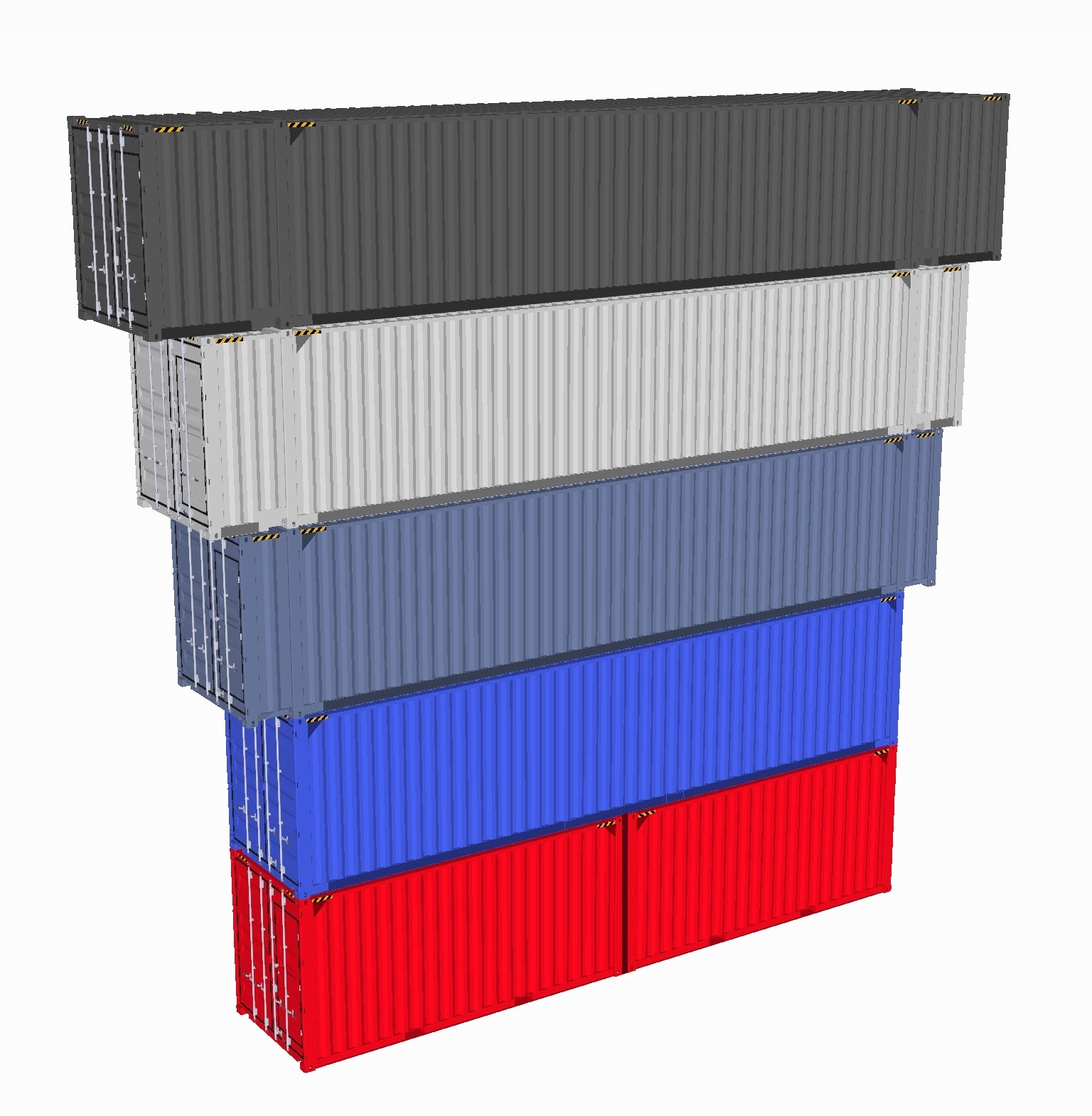Twenty foot equivalent unit on:
[Wikipedia]
[Google]
[Amazon]
The twenty-foot equivalent unit (abbreviated TEU or teu) is a general unit of cargo capacity, often used for container ships and container ports.Rowlett, 2004. It is based on the volume of a
 The standard
The standard
intermodal container
An intermodal container, often called a shipping container, or a freight container, (or simply "container") is a large metal crate designed and built for intermodal freight transport, meaning these containers can be used across different Mode ...
, a standard-sized metal box that can be easily transferred between different modes of transportation, such as ships, trains, and trucks.
Detailed dimensions: 20-foot and 40-foot containers
 The standard
The standard intermodal container
An intermodal container, often called a shipping container, or a freight container, (or simply "container") is a large metal crate designed and built for intermodal freight transport, meaning these containers can be used across different Mode ...
is long and wide. The height of such containers is most commonly but ranges from to .
Another standard container is slightly more than twice as long: , dubbed a forty-foot equivalent unit (often FEU or feu).
The reason the smaller container is short of 20 feet is to allow it to be stacked efficiently with 40-foot containers. The twistlocks on a ship are set so that two standard 20-foot containers have a gap of , allowing a single 40-foot container to fit precisely on top.
The 40-foot containers have found wider acceptance, as they can be pulled by semi-trailer truck
A semi-trailer truck (also known by a wide variety of other terms – see below) is the combination of a tractor unit and one or more semi-trailers to carry freight. A semi-trailer attaches to the tractor with a type of hitch called ...
s. The length of such a combination is within the limits of national road regulations in many countries, requiring no special permission. As some road regulations allow longer trucks, there are also variations of the standard 40-foot container; in Europe and most other places a container of may be pulled as a trailer. Containers with a length of or are restricted to road and rail transport in North America. Although longer than 40 feet, these variants are put in the same class of forty-foot equivalent units.
Equivalence
The carrying capacity of a ship is usually measured by mass (thedeadweight tonnage
Deadweight tonnage (also known as deadweight; abbreviated to DWT, D.W.T., d.w.t., or dwt) or tons deadweight (DWT) is a measure of how much weight a ship can carry. It is the sum of the weights of cargo, fuel, fresh water
Fresh water or ...
) or by volume (the net register tonnage). Deadweight tonnage is generally measured now in metric tons (''tonne
The tonne ( or ; symbol: t) is a unit of mass equal to 1,000 kilograms. It is a non-SI unit accepted for use with SI. It is also referred to as a metric ton in the United States to distinguish it from the non-metric units of the s ...
s''). Register tons are measured in cu. ft, with one register ton equivalent to .
As the TEU is an inexact unit, it cannot be converted precisely into other units. The related unit ''forty-foot equivalent unit'', however, is defined as two TEU.
It is common to designate a container as 2 TEU, rather than 2.25 TEU.
The most common twenty-foot container occupies a space long, wide, and high, with an allowance externally for the corner castings; the internal volume is . However, both ''High cube'' and ''half height'' containers are also reckoned as 1 TEU. This gives a volume range of for one TEU.
While the TEU is not itself a measure of mass, some conclusions can be drawn about the maximum mass that a TEU can represent. The maximum gross mass for a dry cargo container is . Subtracting the tare mass of the container itself, the maximum amount of cargo per TEU is reduced to about .
Similarly, the maximum gross mass for a dry cargo container (including the ''High cube'' container) is . After correcting for tare weight, this gives a cargo capacity of .
Twenty-foot "heavy tested" containers are available for heavy goods such as heavy machinery. These containers allow a maximum weight of , an empty weight of , and a net load of .
See also
*Containerization
Containerization is a system of intermodal freight transport using intermodal containers (also called shipping containers, or International Organization for Standardization, ISO containers). Containerization, also referred as container stuf ...
* Panama Canal toll system
* Shipping ton
* List of busiest container ports
This article lists the world's busiest container port
A port is a maritime facility comprising one or more wharves or loading areas, where ships load and discharge cargo and passengers. Although usually situated on a sea coast or estuary ...
Footnotes
Citations
Bibliography
* * * * * {{DEFAULTSORT:Twenty-Foot Equivalent Unit Imperial units Nautical terminology Intermodal containers Port infrastructure Ship measurements Equivalent units